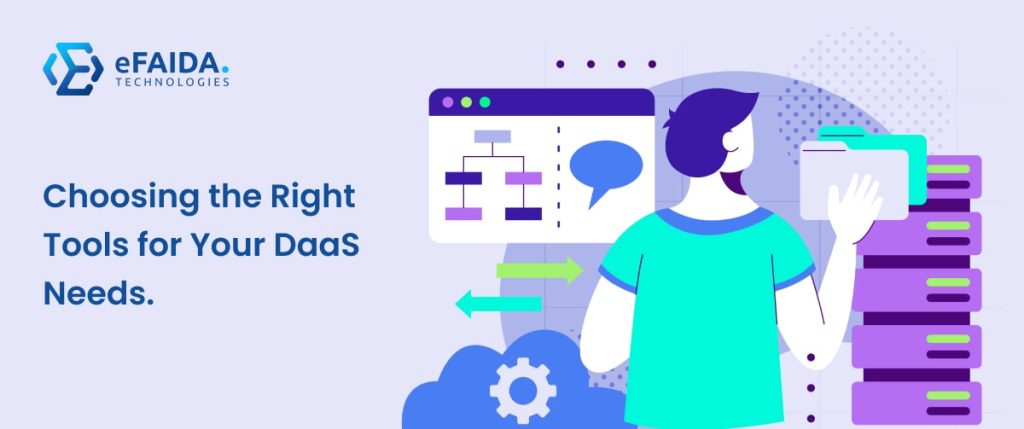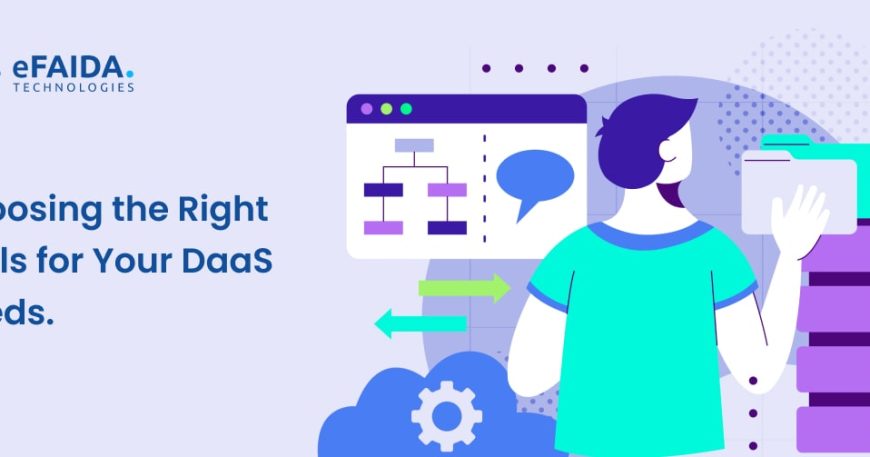Introduction
DevOps as a Service (DaaS) is one of the recent trends in the software development process as it allows the introduction of a new approach together with the necessary tools and consultation. However, the point of interest is not in DaaS but in the toolset that is used in its development and implementation. We have listed some of the best and most popular tools in each of these categories to give you a better idea of which ones will work best for you in this guide.
1. Version Control & Collaboration:
- GitLab: As a matter of fact, this is not only a version control system but also includes code review, project management, and even the creation of CI/CD pipelines. Many of the DaaS providers employ GitLab to manage code sharing and collaboration since it is the best tool for that purpose.
- GitHub: Another such platform is GitHub which provides a social coding environment for developers to collaborate with each other. The DaaS solutions might apply GitHub for developers and a well-organized platform.
2. Continuous Integration & Delivery (CI/CD):
- Jenkins: This is an open-source automation server that is used for constructing, integrating, and deploying applications. Owing to the fact that Jenkins can be easily customized and due to the fact that it can provide configurable pipelines, it may be incorporated into DaaS offerings.
- Bamboo: Bamboo is a commercial CI/CD server that is provided by Atlassian and it integrates well with other Atlassian products. Some of the DaaS providers may use Bamboo for its stability and for having enterprise-level functionalities.
- CircleCI: This cloud-based CI/CD platform is one of the fastest, most scalable, and easy to use by developers, who have been using it to enhance such processes as build, testing, packaging, and deploying their code. As such, DaaS solutions can leverage CircleCI given that it is geared toward frequent and cloud-native deliveries.
3. Configuration Management:
- Ansible: This is an open-source tool that is used in IT automation, configuration management, and application deployment. This is because Ansible is simple to use, does not need any agents, and can be used to manage various components of the infrastructure.
- Chef: Chef is another tool that is used in IaC where IaC is an abbreviation of Infrastructure as Code. Some of the components that could be used in DaaS solutions include Chef because of its ability to script and has a large community.
- Puppet: Puppet is another enterprise solution and it is well known for its security features and role-based control. Certain DaaS providers may implement Puppet for scaling as well as policy compliance.

4. Containerization & Orchestration:
- Docker: It is an open-source project that concentrates on the development, distribution, and management of applications that run in containers. As a portable method of organizing and delivering applications, Docker is widely used by many DaaS suppliers.
- Kubernetes: This is an open-source system that enables containerized application management through deployment, scaling, and management. The reason is that Kubernetes is a great tool for managing complex containerized environments that DaaS solutions may depend on.
5. Monitoring & Alerting:
- Prometheus: This open-source monitoring system is meant to gather metrics, and to produce alerts whenever abnormalities are detected. This paper has demonstrated that Prometheus is useful for DaaS providers as it is a versatile solution with various integration possibilities.
- Datadog: Datadog is a cloud-based application performance monitoring and analytics tool that offers real-time insights about the performance of an application and its underlying infrastructure. Examples of such DaaS solutions may include Datadog for instance because it provides a wide range of monitoring capabilities and a simple view.
6. Security & Compliance:
- Aqua Security: This platform is intended to prevent attacks against the container and cloud-native application workloads. For the DaaS providers, Aqua Security will be relevant given its focus on the security of containers and the analysis of vulnerabilities.
- Sysdig: This cloud-native security platform offers security with visibility against the threats that may occur in a containerized environment. Consequently, DaaS solutions can leverage Sysdig for runtime security and analysis of containerized systems.

Choosing the Right Tools for Your DaaS Needs:
The ideal DaaS toolset depends on your specific requirements. Consider these factors:
- Existing Tools and Infrastructure: When choosing DaaS tools, first, make sure that they are integrated with your current ecosystem.
- Development Process Complexity: Choose only those tools that you think will best apply to your development and your needs.
- Budget and Scalability Needs: In this regard, it is important to compare the costs and determine the scalability options of the DaaS tools.
Conclusion:
Therefore, by integrating the right tools in an organization’s DaaS platform, it will be possible to enhance the benefits of DevOps such as faster deployment, better quality of software, and increased flexibility in the development process. So now you understand what is DaaS, what tools are available, and how to choose them for the needs of your organization. However, as with any other DaaS implementation, it is necessary to be well-prepared and to work on the fine-tuning of the process constantly.
FAQs about Top Tools for Managing DaaS:
Q1. Are these tools included in all DaaS offerings?
Each provider you choose will have a unique set of DaaS tools that they will offer you and it will not be the same for all the providers you select. However, it is important to recognize that many DaaS tools will incorporate these categories of tools; version control, CI/CD, etc.
Q2. Do I need to learn all these tools to use DaaS?
Not necessarily. It is also important to note that DaaS providers usually offer managed services to manage the tools and setup that are used. However, it is not necessary for you to have a general understanding of these tools but it will help you to negotiate with your DaaS provider and get the best from the platform.
Q3. What if my needs are very specific? Are there niche DaaS tools available?
However, there are many more types of specialized DaaS tools in the market than what we have discussed here. These tools may have been developed for specific programming languages, security standards, or the platform where the application will run. In your talks with potential DaaS providers, describe your needs and ask if they provide the tool you are looking for.




